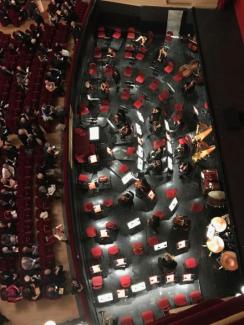Event
Laura Protano-Biggs on the Teatro alla Scala in Milan (Music Building 101)
Prof. Laura Protano-Biggs

We are excited to host a talk by Prof. Laura Protano-Biggs, who teaches at the Peabody Institute (Johns Hopkins University) and is visiting professor at Penn (Music Department) this semester!
Her paper is entitled:
Pure Sound: Architectural Acoustics and Lowered Orchestras
The event will take place in room 101 of the Music Building (Lerner Center, 201 South 34th Street) on Tuesday November 26th at 5:15. Reception will follow. Below please find an abstract. We look forward to seeing many of you at this talk!
*****
When Richard Wagner created a lowered orchestra pit at the Bayreuth Festspielhaus in the 1870s he famously described the decision in terms of concealment; an attempt to hide the means of sound production. In view of the modifications made to numerous opera houses in the decades that followed to create similar orchestra pits, scholars have tended to assume that the Festspielhaus was both the stimulus and model for such spaces. If this tends to flatten out important variations in architectural design between theaters, it also narrates the introduction of orchestra pits from the perspective of audience members alone. While lowered orchestral platforms might have functioned as so-called “mystical chasms” from which sound floated upwards towards awed spectators, these also had a crucial role in the creation of enclosed, protected spaces for musicians.
The 1907 construction of the so-called “golfo mistico” at the preeminent Teatro alla Scala in Milan, under the supervision of Arturo Toscanini, was to a considerable extent an experiment in the creation of a more professional atmosphere than performance at audience level allowed. However much the term golfo mistico betrays a Romantic conception of the space, it was not, I argue, coincidental that the pit was constructed in the same moment that trade unions for musicians were establishing themselves. Meanwhile, musicians were also becoming familiar with other sorts of enclosures calibrated to control acoustics and eliminate distractions, in the form of the earliest sound studios. Placing La Scala’s golfo mistico in the context of these dual developments in the Italian music industry at the time, I reveal the extent of the orchestra pit’s entanglements in a musical landscape which increasingly placed musicians at one remove from their audiences; in tandem, I offer a new framework in which to make sense of the new (and enduring) fashion for this architectural innovation.
